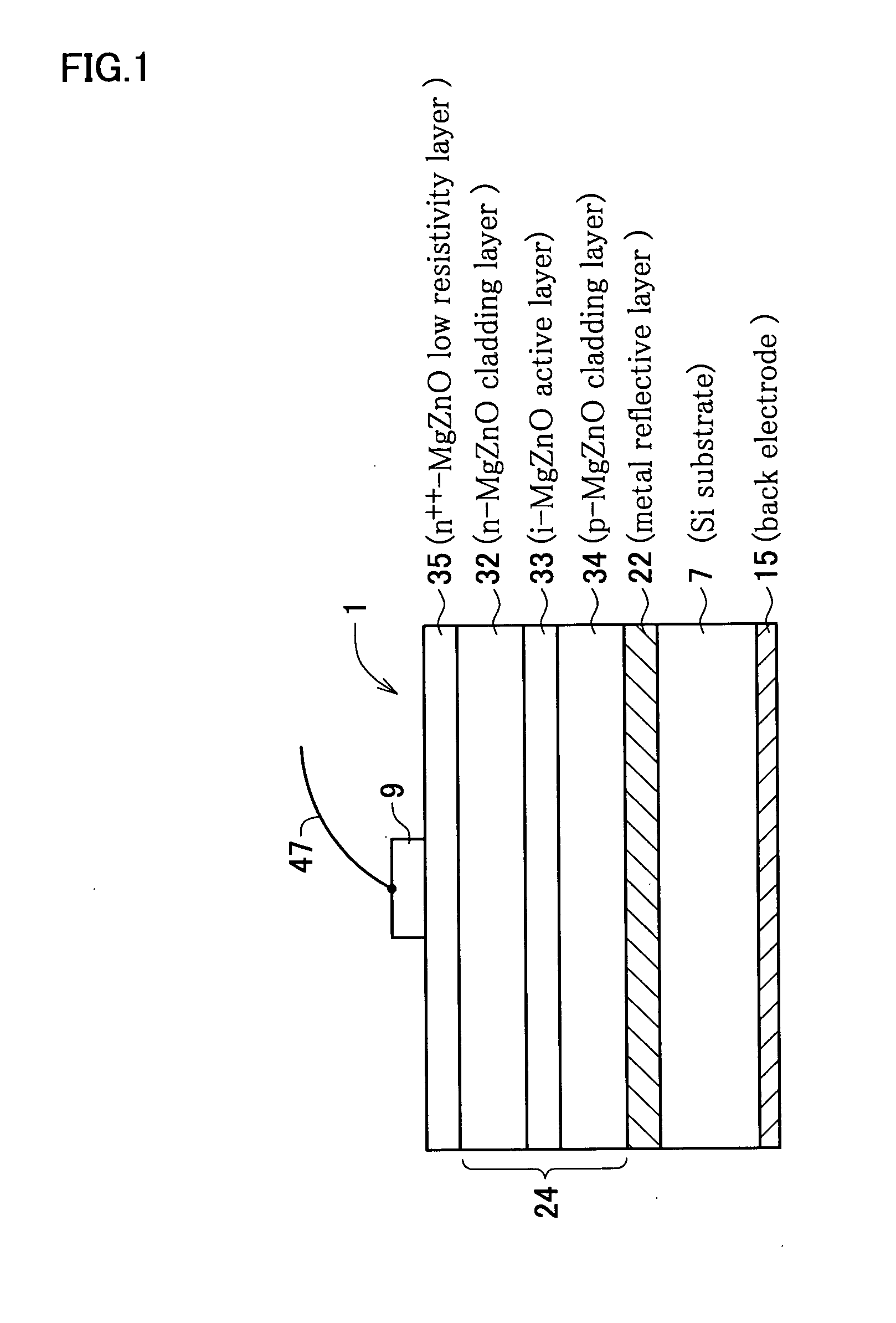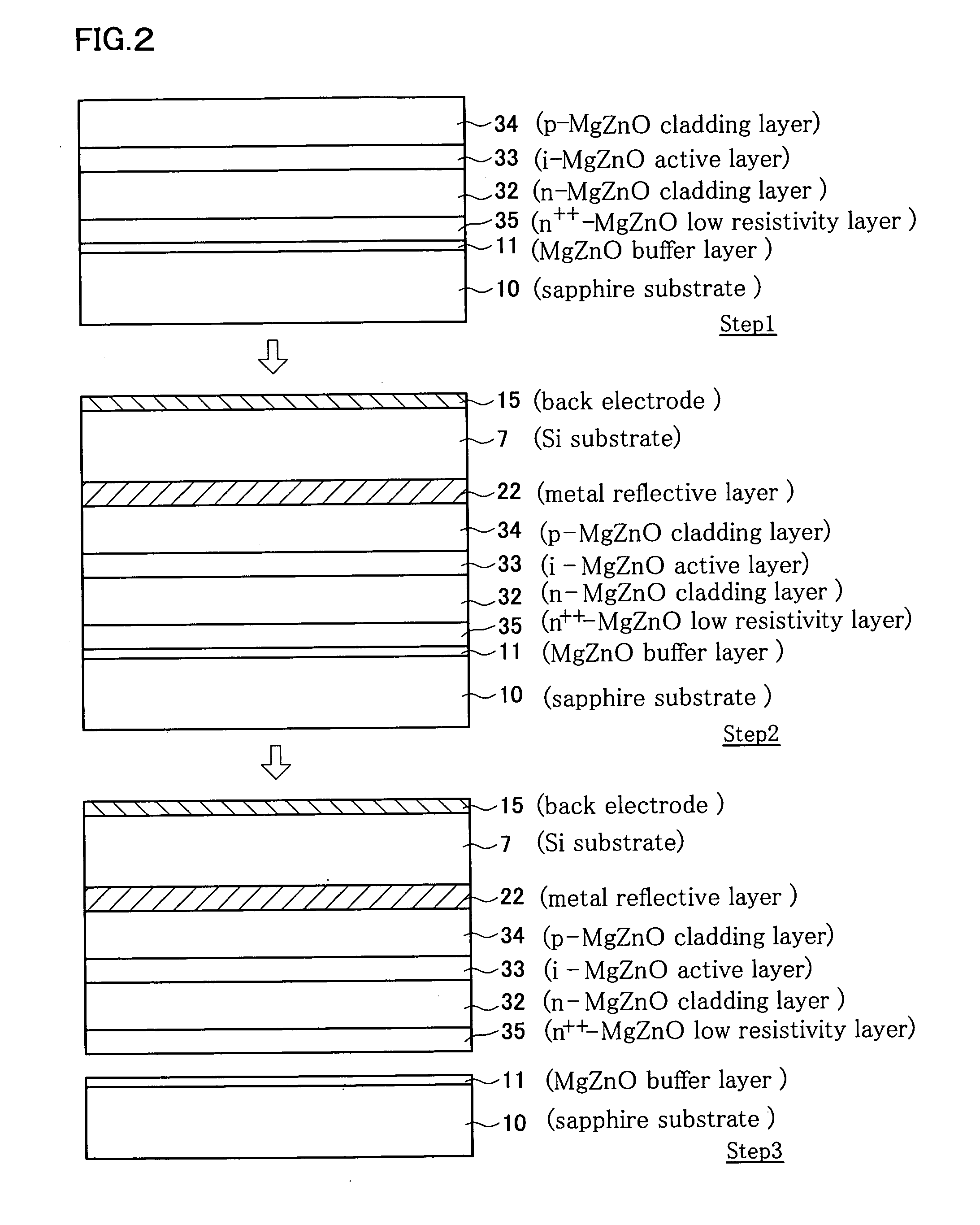Light-emitting device and method for manufacturing light-emitting device
- Summary
- Abstract
- Description
- Claims
- Application Information
AI Technical Summary
Benefits of technology
Problems solved by technology
Method used
Image
Examples
Embodiment Construction
[0028] The following paragraphs will describe best modes for carrying out this invention, referring to the attached drawings.
[0029]FIG. 1 schematically shows, in a form of stacked structure, an essential portion of a light emitting device 1 as one embodiment of this invention, having a light emitting layer section 24 in which an n-type cladding layer 32, an active layer 33 and a p-type cladding layer 34 are stacked in this order. Each of the layers 32 to 34 is formed as a MgaZn1-aO-type oxide layer (0≦a≦1: also referred to as MgZnO hereinafter: it is to be noted that a notation MgZnO includes concepts of both of simple oxides MgO and ZnO, as is obvious from the variable range for alloy composition “a”).
[0030] The light emitting device 1 uses a face on the n-type cladding layer 32 side a light extraction surface, and has, as being formed on the main surface on the light extraction surface side of the n-type cladding layer 32, an n-type low resistivity layer 35 composed of a MgaZn1-...
PUM
 Login to View More
Login to View More Abstract
Description
Claims
Application Information
 Login to View More
Login to View More - R&D
- Intellectual Property
- Life Sciences
- Materials
- Tech Scout
- Unparalleled Data Quality
- Higher Quality Content
- 60% Fewer Hallucinations
Browse by: Latest US Patents, China's latest patents, Technical Efficacy Thesaurus, Application Domain, Technology Topic, Popular Technical Reports.
© 2025 PatSnap. All rights reserved.Legal|Privacy policy|Modern Slavery Act Transparency Statement|Sitemap|About US| Contact US: help@patsnap.com



